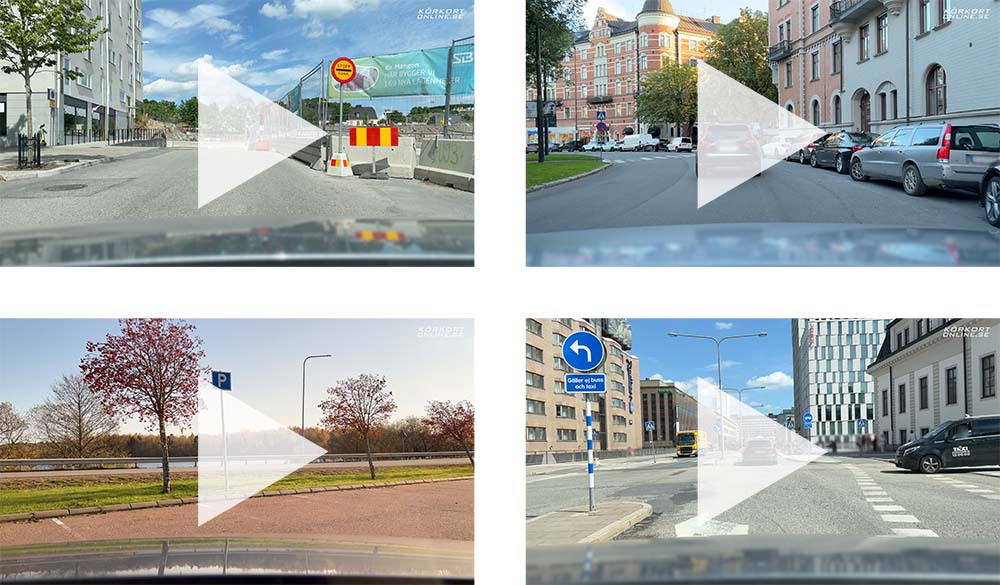Körkortonline > Theory & regulations > Service & maintenance
Basic service of the car – replenishing fluids, etc.
Car battery

Warning: battery.
- The car battery stores electricity for the parts of the car that are powered by electricity, such as the radio and the starter motor.
- Check the battery by checking the level of fluid inside (there are often MIN./MAX. levels).
- If the level is too low, top up the battery with distilled water. Maintenance-free batteries are also available, which must be replaced when they stop working.
- When the engine is running, the battery is charged by a generator.
- The battery deteriorates over time.
- The fluid in the battery is corrosive. You must therefore handle the car battery with care.
Fuses
- Fuses protect the car’s electrical system from being damaged by an overload.
- If something powered by electricity has stopped working, it is likely that a fuse needs changing. In a used fuse, the wire fuse element between the ends/mounts has come away (burned up).
- Check the car’s user manual to see where the fuse box is located.
Radiator
- The radiator’s job is to prevent the engine from overheating.
- If the engine temperature is too high, it may be because the car has too little coolant. You should not open the radiator when the engine is warm, however, as it may release very hot steam and burn you.
- The radiator must be replenished with coolant, which consists of water and glycol.
Engine oil

Warning: oil pressure.
- Engine oil is used to lubricate the engine so that none of its parts seize up.
- The oil level is checked using the dipstick by the engine compartment. Pull out the stick, wipe it (to remove oil splashes caused by motion), dip it in the oil tank and bring it up again to check the mark.
- The oil is normally replenished by removing a screw cap on the engine block bearing the text OIL.
Windscreen washer fluid
- Windscreen washer fluid helps the windscreen wipers to wash the windscreen.
- You check the level by looking at the windscreen washer fluid container under the bonnet.
Starting the engine using starter cables
When using starter cables to start a car, it is important to proceed in the following order. Failure to do so can result in an oxyhydrogen gas explosion.
- Connect the batteries’ positive terminals together using the red cable (it does not matter in which order you connect them).
- Connect one end of the black cable to the negative terminal on the car which is assisting.
- Connect the other end of the black cable to an unpainted metal surface on the car which is not starting. This is in order to earth the cable. The metal surface must be as far away from the battery as possible.
- Start the engine on the car that is assisting.
- Attempt to start the engine on the car that is receiving assistance. Do not make too many attempts, however, as this can damage the catalytic converter.
- First remove the black cable connected to the metal surface.
- Then remove the black cable from the battery of the assisting car.
- Finally, remove the red cable. The order in which you remove the ends is not important.
Latest forum posts
Topic
Posts
Latest post
- << Roadworthiness test
- Service & maintenance ↑↑
- Registration certificate >>



